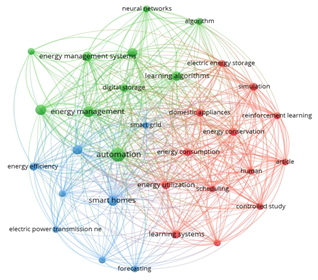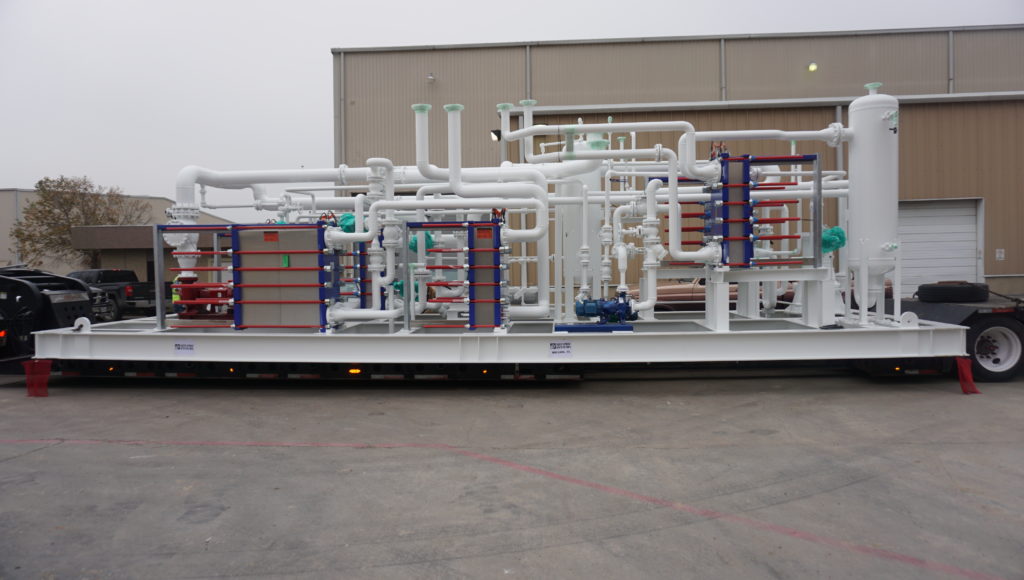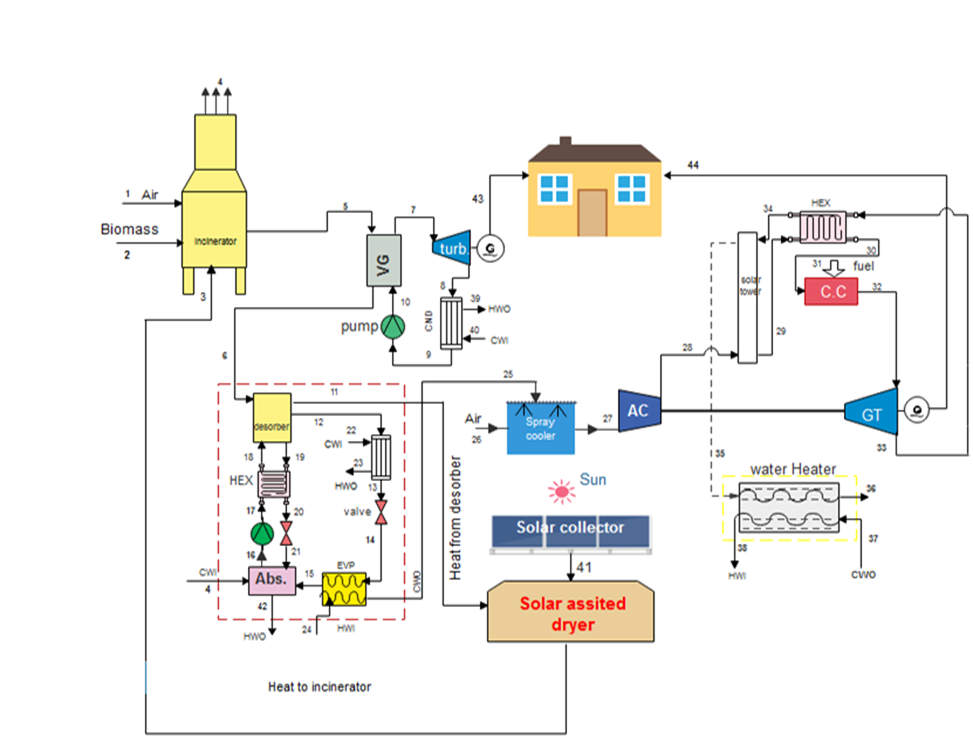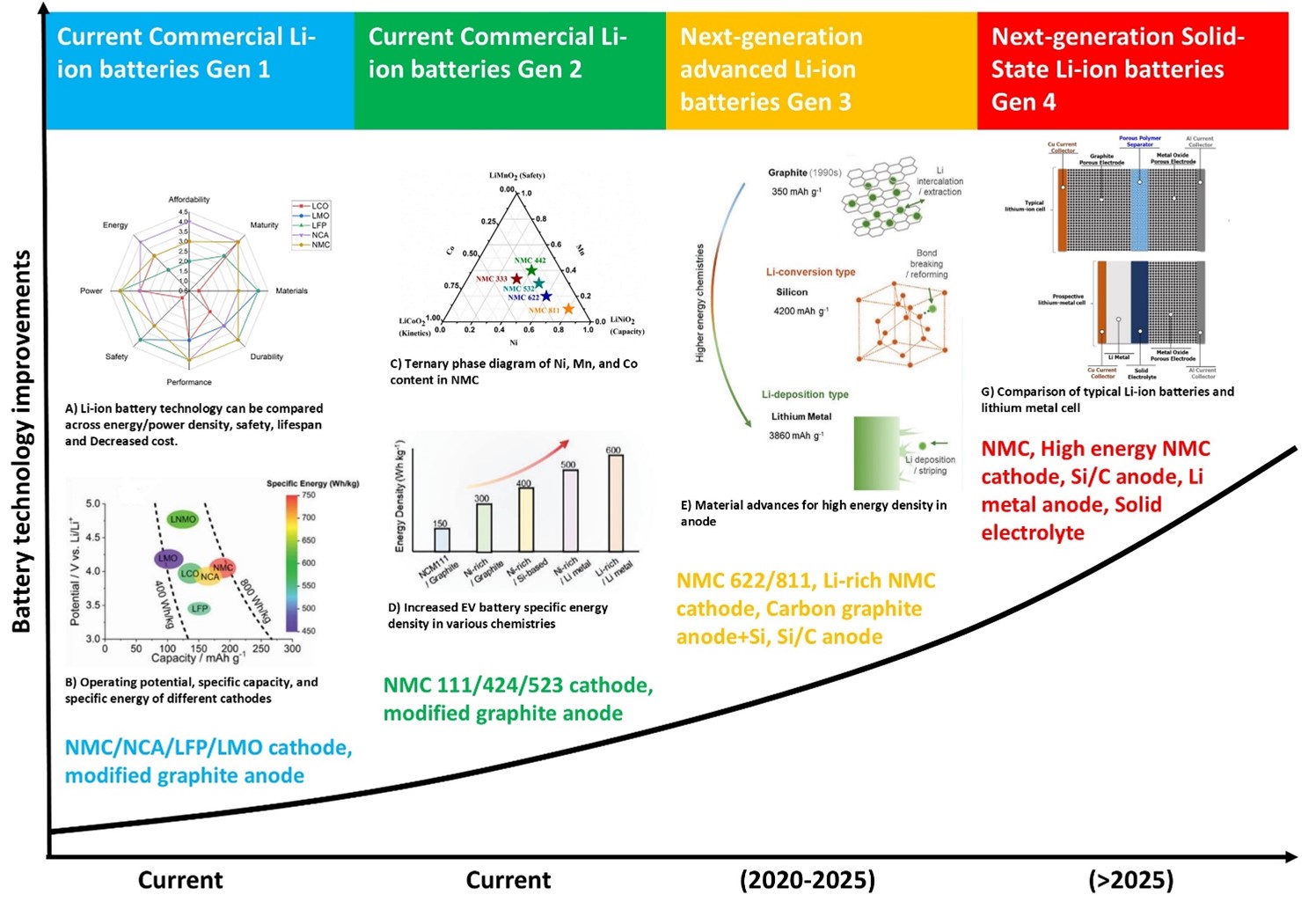Green hydrogen prospects in Peninsular Malaysia: a techno-economic analysis via Monte Carlo simulations
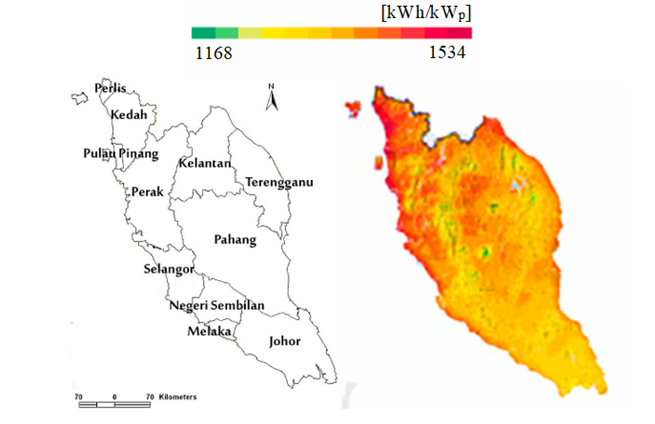
Downloads
According to Malaysia's National Energy Transition Roadmap, hydrogen is a critical component of the country's energy transition. However, there is a scarcity of hydrogen studies for Peninsular Malaysian states, which limits discussions on green hydrogen production. This study employs a Monte Carlo model to assess the economic and technical factors influencing the success of green hydrogen in Peninsular Malaysia. The study focuses on three target years: 2023, 2030, and 2050, representing various stages of technological development and market adoption. The levelized cost of hydrogen (LCOH) of a 1-MW Proton Exchange Membrane (PEM) electrolyzer system ranges from $5.39 to $10.97 per kg in 2023, highlighting early-stage challenges and uncertainties. A 6-MW PEM electrolyzer system could achieve an LCOH of $3.50 to $4.72 per kg by 2030, indicating better prospects. Because of technological advancements and cost reductions, a 20-MW PEM electrolyzer system could achieve an LCOH of $3.12 to $3.64 per kg in 2050. The findings indicate that the northern regions of Peninsular Malaysia have consistently low LCOH values due to favorable geographical conditions. Due to minor variations in solar capacity factors, uncertainty distributions in LCOH remain stable across different regions. Some states may face increased uncertainty, emphasizing the need for additional policy support mechanisms to mitigate risks associated with green hydrogen investments. The sensitivity analysis shows that key cost drivers are shifting, with early-stage electrolyzer investments dominating in 2023 and electricity prices becoming more important in 2030 and 2050. Future research could focus on optimizing green hydrogen systems for areas with underdeveloped green hydrogen industries. This study contributes to informed discussions about green hydrogen production by emphasizing the importance of tailored strategies that consider local conditions and highlighting the role of Peninsular Malaysia in the energy transition.
Rahman, Mohammad Nurizat, and Mazlan Abdul Wahid. "Renewable-based zero-carbon fuels for the use of power generation: A case study in Malaysia supported by updated developments worldwide." Energy Reports 7 (2021): 1986-2020. https://doi.org/10.1016/j.egyr.2021.04.005
Yaakob, Usman, Tarmiji Masron, and Fujimaki Masami. "Ninety years of urbanization in Malaysia: a geographical investigation of its trends and characteristics." Journal of Ritsumeikan Social Sciences and Humanities 4, no. 3 (2010): 79-101.
“Generating Facility.” Kapar Energy Ventures. https://kaparenergy.com.my/generating-facility/
“TNB Unit Looks to Turnaround Plan.” The Edge Malaysia. https://theedgemalaysia.com/article/tnb-unit-looks-turnaround-plan.
Lei, Liang. “Malaysia Utility Giant TNB Announces Early Closure of Coal Plants.” Eco, November 2, 2022. https://www.eco-business.com/news/malaysia-utility-giant-tnb-announces-early-closure-of-coal-plants/
TNB Fuel – our energy is yours. https://www.tnbfuel.com/our-customers/
“Technology.” TNBJ, April 24, 2018. https://tnbj.com.my/technology/
Security of energy supply - parlimen.gov.my. https://www.parlimen.gov.my/images/webuser/artikel/ro/amy/Security%20of%20Energy%20Supply%2026%20September%202016.pdf
“Power Plant Portfolio: Malakoff Corporation Berhad: Kuala Lumpur.” Malakoff. https://www.malakoff.com.my/power-plant-portfolio
Carmen. “Jimah Coal Fired Power Plant, Malaysia.” Power Technology, December 6, 2021. https://www.power-technology.com/marketdata/jimah-coal-fired-power-plant-malaysia/
Inside Southeast Asia’s first ultra-supercritical power plant: Manjung 4. https://www.nst.com.my/news/2016/08/164403/inside-southeast-asias-first-ultra-supercritical-power-plant-manjung-4
“TNB Signs 25-Year PPA with Subsidiary.” The Edge Malaysia. https://theedgemalaysia.com/article/tnb-signs-25-year-ppa-subsidiary
TNB’s coal-fired power plants begin producing electricity. https://www.nst.com.my/business/2019/08/515008/tnbs-coal-fired-power-plants-begin-producing-electricity
“Jimah East (Tuanku Muhriz) Coal-Fired Power Plant, Malaysia.” NS Energy. https://www.nsenergybusiness.com/projects/jimah-east-coal-fired-power-plant/
Hydrogen Economy & Technology Roadmap. https://www.mosti.gov.my/wp-content/uploads/repository/penerbitan/2023/HIDROGEN%20ECONOMY%20&%20TECHNOLOGY%20ROADMAP.pdf
Mah, Angel Xin Yee, Wai Shin Ho, Cassendra Phun Chien Bong, Mimi H. Hassim, Peng Yen Liew, Umi Aisah Asli, Mohd Johari Kamaruddin, and Nishanth G. Chemmangattuvalappil. "Review of hydrogen economy in Malaysia and its way forward." International Journal of Hydrogen Energy 44, no. 12 (2019): 5661-5675. https://doi.org/10.1016/j.ijhydene.2019.01.077
National Energy Transition Roadmap (NETR). https://www.ekonomi.gov.my/sites/default/files/2023-09/National%20Energy%20Transition%20Roadmap_0.pdf
Malaysia Energy Statistics Handbook 2021. https://www.st.gov.my/en/general/add_counter/871/download/read_count
Shekarchian, M., Mahmoud Moghavvemi, T. M. I. Mahlia, and A. Mazandarani. "A review on the pattern of electricity generation and emission in Malaysia from 1976 to 2008." Renewable and sustainable energy reviews 15, no. 6 (2011): 2629-2642. https://doi.org/10.1016/j.rser.2011.03.024
Zakaria, Zulfirdaus, Siti Kartom Kamarudin, Mohd Nur Ikhmal Salehmin, Nor Naimah Rosyadah Ahmad, Muhammad Akmal Aminuddin, Iesti Hajar Hanapi, Siti Hasanah Osman, and Ahmad Azmin Mohamad. "Energy scenario in Malaysia: Embarking on the potential use of hydrogen energy." International Journal of Hydrogen Energy (2023). https://doi.org/10.1016/j.ijhydene.2023.05.358
Ahmad, Muhammad Shakeel, Mohd Syukri Ali, and Nasrudin Abd Rahim. "Hydrogen energy vision 2060: Hydrogen as energy Carrier in Malaysian primary energy mix–Developing P2G case." Energy Strategy Reviews 35 (2021): 100632. https://doi.org/10.1016/j.esr.2021.100632
Benalcazar, Pablo, and Aleksandra Komorowska. "Prospects of green hydrogen in Poland: A techno-economic analysis using a Monte Carlo approach." International Journal of Hydrogen Energy 47, no. 9 (2022): 5779-5796. https://doi.org/10.1016/j.ijhydene.2021.12.001
Jang, Dohyung, Kilwon Kim, Kyong-Hwan Kim, and Sanggyu Kang. "Techno-economic analysis and Monte Carlo simulation for green hydrogen production using offshore wind power plant." Energy Conversion and Management 263 (2022): 115695. https://doi.org/10.1016/j.enconman.2022.115695
Akdağ, Ozan. "A compact production plant model for green hydrogen production from medium temperature geothermal resources: A case study of the Van Lake-Zilan location." International Journal of Hydrogen Energy (2023). https://doi.org/10.1016/j.ijhydene.2023.08.037
Kadirgama, K., A. K. Amirruddin, and R. A. Bakar. "Estimation of solar radiation by artificial networks: east coast Malaysia." Energy Procedia 52 (2014): 383-388. https://doi.org/10.1016/j.egypro.2014.07.090
Chi, Jun, and Hongmei Yu. "Water electrolysis based on renewable energy for hydrogen production." Chinese Journal of Catalysis 39, no. 3 (2018): 390-394. https://doi.org/10.1016/S1872-2067(17)62949-8
dos Santos, Kenia Gabriela, Caroline Thaís Eckert, Eduardo De Rossi, Reinaldo Aparecido Bariccatti, Elisandro Pires Frigo, Cleber Antonio Lindino, and Helton José Alves. "Hydrogen production in the electrolysis of water in Brazil, a review." Renewable and Sustainable Energy Reviews 68 (2017): 563-571. https://doi.org/10.1016/j.rser.2016.09.128
Kumar, S. Shiva, and V. Himabindu. "Hydrogen production by PEM water electrolysis–A review." Materials Science for Energy Technologies 2, no. 3 (2019): 442-454. https://doi.org/10.1016/j.mset.2019.03.002
Azni, Muhammad Asyraf, Rasyikah Md Khalid, Umi Azmah Hasran, and Siti Kartom Kamarudin. "Review of the effects of fossil fuels and the need for a hydrogen fuel cell policy in Malaysia." Sustainability 15, no. 5 (2023): 4033. https://doi.org/10.3390/su15054033
Peng, Xiaodong, Zhanfeng Deng, Xueying Zhao, Gendi Li, Jie Song, Danxi Liang, Xiaotong Sun, Guizhi Xu, Wei Kang, and Min Liu. "Experimental and analytical study of a proton exchange membrane electrolyser integrated with thermal energy storage for performance enhancement." International Journal of Photoenergy 2022 (2022). https://doi.org/10.1155/2022/7543121
van Haersma Buma, Bernhard ND, Marco Peretto, Ziad M. Matar, and Geerten van de Kaa. "Towards renewable hydrogen-based electrolysis: Alkaline vs Proton Exchange Membrane." Heliyon 9, no. 7 (2023). https://doi.org/10.1016/j.heliyon.2023.e17999
Fabianová, Jana, Jaroslava Janeková, Gabriel Fedorko, and Vieroslav Molnár. "A Comprehensive Methodology for Investment Project Assessment Based on Monte Carlo Simulation." Applied Sciences 13, no. 10 (2023): 6103. https://doi.org/10.3390/app13106103
Oszczypała, Mateusz, Jarosław Ziółkowski, and Jerzy Małachowski. "Modelling the operation process of light utility vehicles in transport systems using Monte Carlo simulation and semi-markov approach." Energies 16, no. 5 (2023): 2210. https://doi.org/10.3390/en16052210
Heck, Nathaniel, Courtney Smith, and Eric Hittinger. "A Monte Carlo approach to integrating uncertainty into the levelized cost of electricity." The Electricity Journal 29, no. 3 (2016): 21-30. https://doi.org/10.1016/j.tej.2016.04.001
Alsharif, Abdulgader, Chee Wei Tan, Razman Ayop, Ahmed Al Smin, Abdussalam Ali Ahmed, Farag Hamed Kuwil, and Mohamed Mohamed Khaleel. "Impact of electric Vehicle on residential power distribution considering energy management strategy and stochastic Monte Carlo algorithm." Energies 16, no. 3 (2023): 1358. https://doi.org/10.3390/en16031358
Liu, Ruili, Liuliu Peng, Guoqing Huang, Xuhong Zhou, Qingshan Yang, and Jifeng Cai. "A Monte Carlo simulation method for probabilistic evaluation of annual energy production of wind farm considering wind flow model and wake effect." Energy Conversion and Management 292 (2023): 117355. https://doi.org/10.1016/j.enconman.2023.117355
Wang, Yaqin, Chang Wen, Jing Tu, Zhonghua Zhan, Bohan Zhang, Qian Liu, Zhiyin Zhang, Huimin Hu, and Tianyu Liu. "The multi-scenario projection of cost reduction in hydrogen production by proton exchange membrane (PEM) water electrolysis in the near future (2020–2060) of China." Fuel 354 (2023): 129409. https://doi.org/10.1016/j.fuel.2023.129409
Bigestans, Davis, Michel-Alexandre Cardin, and Nikolaos Kazantzis. "Economic performance evaluation of flexible centralised and decentralised blue hydrogen production systems design under uncertainty." Applied Energy 352 (2023): 121944. https://doi.org/10.1016/j.apenergy.2023.121944
Interest rates & volumes - Bank Negara Malaysia. https://www.bnm.gov.my/interest-rates-volumes
“Pricing & Tariffs.” TNB Better. Brighter. https://www.tnb.com.my/residential/pricing-tariffs/
“Pricing & Tariffs.” TNB Better. Brighter. https://www.tnb.com.my/commercial-industrial/pricing-tariffs1/
“Suruhanjaya Perkhidmatan Air Negara.” https://www.span.gov.my/
IRENA. Green hydrogen cost reduction. https://www.irena.org/-/media/Files/IRENA/Agency/Publication/2020/Dec/IRENA_Green_hydrogen_cost_2020.pdf
Vartiainen, Eero, Christian Breyer, David Moser, Eduardo Román Medina, Chiara Busto, Gaëtan Masson, Elina Bosch, and Arnulf Jäger-Waldau. "True cost of solar hydrogen." Solar RRL 6, no. 5 (2022): 2100487. https://doi.org/10.1002/solr.202100487
Grimm, Alexa, Wouter A. de Jong, and Gert Jan Kramer. "Renewable hydrogen production: A techno-economic comparison of photoelectrochemical cells and photovoltaic-electrolysis." International Journal of Hydrogen Energy 45, no. 43 (2020): 22545-22555. https://doi.org/10.1016/j.ijhydene.2020.06.092
Lee, Hyunjun, Boreum Lee, Manhee Byun, and Hankwon Lim. "Economic and environmental analysis for PEM water electrolysis based on replacement moment and renewable electricity resources." Energy Conversion and Management 224 (2020): 113477. https://doi.org/10.1016/j.enconman.2020.113477
Schmidt, Oliver, Ajay Gambhir, Iain Staffell, Adam Hawkes, Jenny Nelson, and Sheridan Few. "Future cost and performance of water electrolysis: An expert elicitation study." International journal of hydrogen energy 42, no. 52 (2017): 30470-30492. https://doi.org/10.1016/j.ijhydene.2017.10.045
Study on development of water electrolysis in the EU, fuel cells and hydrogen joint undertaking. https://www.fch.europa.eu/sites/default/files/FCHJUElectrolysisStudy_FullReport (ID 199214).pdf
Kopp, Martin, David Coleman, Christoph Stiller, Klaus Scheffer, Jonas Aichinger, and Birgit Scheppat. "Energiepark Mainz: Technical and economic analysis of the worldwide largest Power-to-Gas plant with PEM electrolysis." International Journal of Hydrogen Energy 42, no. 19 (2017): 13311-13320. https://doi.org/10.1016/j.ijhydene.2016.12.145
Bhandari, Ramchandra, and Ronak Rakesh Shah. "Hydrogen as energy carrier: techno-economic assessment of decentralized hydrogen production in Germany." Renewable Energy 177 (2021): 915-931. https://doi.org/10.1016/j.renene.2021.05.149
Yates, Jonathon, Rahman Daiyan, Robert Patterson, Renate Egan, Rose Amal, Anita Ho-Baille, and Nathan L. Chang. "Techno-economic analysis of hydrogen electrolysis from off-grid stand-alone photovoltaics incorporating uncertainty analysis." Cell Reports Physical Science 1, no. 10 (2020). https://doi.org/10.1016/j.xcrp.2020.100209
Piraino, F., M. Genovese, and P. Fragiacomo. "Towards a new mobility concept for regional trains and hydrogen infrastructure." Energy Conversion and Management 228 (2021): 113650. https://doi.org/10.1016/j.enconman.2020.113650
Hydrogen production cost from PEM electrolysis. https://www.hydrogen.energy.gov/pdfs/19009_h2_production_cost_pem_electrolysis_2019.pdf
Abdullah, Wan Syakirah Wan, Miszaina Osman, Mohd Zainal Abidin Ab Kadir, and Renuga Verayiah. "The potential and status of renewable energy development in Malaysia." Energies 12, no. 12 (2019): 2437. https://doi.org/10.3390/en12122437
Chua, Shing Chyi, and Tick Hui Oh. "Solar energy outlook in Malaysia." Renewable and Sustainable Energy Reviews 16, no. 1 (2012): 564-574. https://doi.org/10.1016/j.rser.2011.08.022
Ozturk, Munir, Naheed Saba, Volkan Altay, Rizwan Iqbal, Khalid Rehman Hakeem, Mohammad Jawaid, and Faridah Hanum Ibrahim. "Biomass and bioenergy: An overview of the development potential in Turkey and Malaysia." Renewable and Sustainable Energy Reviews 79 (2017): 1285-1302. https://doi.org/10.1016/j.rser.2017.05.111
Hossain, Monowar, A. S. N. Huda, Saad Mekhilef, Mehdi Seyedmahmoudian, Ben Horan, Alex Stojcevski, and Mahrous Ahmed. "A state-of-the-art review of hydropower in Malaysia as renewable energy: Current status and future prospects." Energy strategy reviews 22 (2018): 426-437. https://doi.org/10.1016/j.esr.2018.11.001
Sovacool, Benjamin K., and Ira Martina Drupady. "Examining the small renewable energy power (SREP) program in Malaysia." Energy Policy 39, no. 11 (2011): 7244-7256. https://doi.org/10.1016/j.enpol.2011.08.045
“Fuel Cell Institute (SELFUEL) .” Institut Sel Fuel | Masa Depan Tenaga. https://www.ukm.my/selfuel/
“Facts & History: Centre of Hydrogen Energy(Che).” CENTRE OF HYDROGEN ENERGY (CHE). https://research.utm.my/che/about-us/facts-history
Wong, S. L., Norzita Ngadi, Tuan Amran Tuan Abdullah, and I. M. Inuwa. "Recent advances of feed-in tariff in Malaysia." Renewable and Sustainable Energy Reviews 41 (2015): 42-52. https://doi.org/10.1016/j.rser.2014.08.006
Joshi, Darshan. "Evaluating the Performance of the Sustainable Energy Development Authority (SEDA) and Renewable Energy Policy in Malaysia." Penang Institute: Pulau Pinang, Malaysia (2018). https://penanginstitute.org/wp-content/uploads/2018/06/Evaluating-the-Performance-of-SEDA-and-RE-Policy-in-Malaysia_PI_Darshan_5-June-2018.pdf
Amran, Azlan, Mehran Nejati, Say Keat Ooi, and Faizah Darus. "Exploring issues and challenges of green financing in Malaysia: Perspectives of financial institutions." Sustainability and Social Responsibility of Accountability Reporting Systems: A Global Approach (2018): 255-266. https://doi.org/10.1007/978-981-10-3212-7_15
Ezuma, Raja Elyn Maryam Raja, Nitanan Koshy Matthew, R. E. M. R. Ezuma, and N. K. Matthew. "The perspectives of stakeholders on the effectiveness of green financing schemes in Malaysia." Green Finance 4, no. 4 (2022): 450-473. https://www.aimspress.com/aimspress-data/gf/2022/4/PDF/GF-04-04-022.pdf
Vaka, Mahesh, Rashmi Walvekar, Abdul Khaliq Rasheed, and Mohammad Khalid. "A review on Malaysia’s solar energy pathway towards carbon-neutral Malaysia beyond Covid’19 pandemic." Journal of cleaner production 273 (2020): 122834. https://doi.org/10.1016/j.jclepro.2020.122834
Abdul Latif, Siti Norasyiqin, Meng Soon Chiong, Srithar Rajoo, Asako Takada, Yoon-Young Chun, Kiyotaka Tahara, and Yasuyuki Ikegami. "The trend and status of energy resources and greenhouse gas emissions in the Malaysia power generation mix." Energies 14, no. 8 (2021): 2200. https://doi.org/10.3390/en14082200
Kotowicz, Janusz, Daniel Węcel, and Michał Jurczyk. "Analysis of component operation in power-to-gas-to-power installations." Applied energy 216 (2018): 45-59. https://doi.org/10.1016/j.apenergy.2018.02.050
Kumar, S. Shiva, and Hankwon Lim. "An overview of water electrolysis technologies for green hydrogen production." Energy reports 8 (2022): 13793-13813. https://doi.org/10.1016/j.egyr.2022.10.127
Rahman, Mohammad Nurizat, Norshakina Shahril, and Suzana Yusup. "Hydrogen-Enriched Natural Gas Swirling Flame Characteristics: A Numerical Analysis." CFD Letters 14, no. 7 (2022): 100-112. https://doi.org/10.37934/cfdl.14.7.100112
Kim, Young-Kuk, Ju-Hee Kim, and Seung-Hoon Yoo. "Public perspective on co-firing hydrogen with natural gas in power plants in South Korea." International Journal of Hydrogen Energy 48, no. 11 (2023): 4119-4128. https://doi.org/10.1016/j.ijhydene.2022.10.266
Cossu, Silvestro, Roberto Baccoli, and Emilio Ghiani. "Utility scale ground mounted photovoltaic plants with gable structure and inverter oversizing for land-use optimization." Energies 14, no. 11 (2021): 3084. https://doi.org/10.3390/en14113084
Chandel, Rahul, Shyam Singh Chandel, and Prashant Malik. "Perspective of new distributed grid connected roof top solar photovoltaic power generation policy interventions in India." Energy Policy 168 (2022): 113122. https://doi.org/10.1016/j.enpol.2022.113122
Solargis. Global solar atlas. https://globalsolaratlas.info/downloads/malaysia
Izquierdo, Salvador, Carlos Montañés, César Dopazo, and Norberto Fueyo. "Analysis of CSP plants for the definition of energy policies: The influence on electricity cost of solar multiples, capacity factors and energy storage." Energy policy 38, no. 10 (2010): 6215-6221. https://doi.org/10.1016/j.enpol.2010.06.009
“Solar Generation Profile.” Large scale solar. https://www.gso.org.my/SystemData/Solar.aspx
Azhari, Ayu Wazira, Kamaruzzaman Sopian, Azami Zaharim, and Mohamad Al Ghoul. "A new approach for predicting solar radiation in tropical environment using satellite images-case study of Malaysia." WSEAS Transactions on Environment and Development 4, no. 4 (2008): 373-378. https://citeseerx.ist.psu.edu/document?repid=rep1&type=pdf&doi=9743b37e48fd6eea6d8521f0589bd47fcb984bef
Shavalipour, Aghil, Mir Hamed Hakemzadeh, K. Sopian, Sallehuddin Mohamed Haris, and Saleem H. Zaidi. "New formulation for the estimation of monthly average daily solar irradiation for the tropics: a case study of Peninsular Malaysia." International Journal of Photoenergy 2013 (2013). https://doi.org/10.1155/2013/174671










